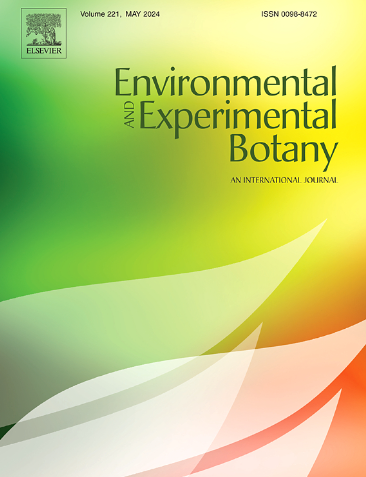Physiological response of the endemic Mediterranean seagrass, Posidonia oceanica to multiple stresses
IF 4.7
2区 生物学
Q2 ENVIRONMENTAL SCIENCES
引用次数: 0
Abstract
The endemic Mediterranean marine angiosperm, Posidonia oceanica, stands out for being a biostructuring seagrass species with a great importance in trophic relations and coastal erosion protection. This study aimed to understand the physiological response of this emblematic seagrass to multiple stresses, with an emphasis on evaluating the acclimatory capacity of juvenile leaves to low temperatures during winter in three sites with a contrasting exposure to heavy metals of anthropogenic origin in the Mediterranean coast near Cadaqués (NE Spain). Heavy metal concentrations together with multiple physiological stress markers, including the capacity of photo- and antioxidant protection and the extent of lipid peroxidation, were evaluated. Shoots from the three studied sites accumulated foliar concentrations of heavy metals that were higher than reference threshold values, especially for Cu, which showed a decreasing concentration gradient from the coast to the open sea. The maximum photochemical efficiency of Photosystem II (PSII) (Fv/Fm ratio) of juvenile leaves was sensitive to low temperatures, despite values attained did not indicate damage to PSII, which was confirmed with studies of recovery of the Fv/Fm ratio and the absence of symptoms of photo-oxidative stress. However, the presence of heavy metals seemed to negatively influence PSII photochemistry, as sites with the highest Cu concentrations also showed the lowest Fv/Fm ratios during spring, even though water temperature had already warmed. Fv/Fm values attained were not recoverable after an extended dark acclimation period, thus indicating damage to PSII. Heavy metals did not seem to exert a negative synergistic effect with low temperatures but rather affected the physiological performance of newly produced juvenile leaves during spring. Despite the great capacity of this species to adapt to multiple stresses, results underscore the need to urgently reduce the current human footprint on seagrass meadows in the Mediterranean basin.
地中海特有海草Posidonia oceanica对多种胁迫的生理反应
地中海特有的海洋被子植物Posidonia oceanica是一种生物结构海草,在营养关系和海岸侵蚀保护中具有重要意义。本研究旨在了解这种具有象征意义的海草对多种胁迫的生理反应,重点评估了在西班牙东北部cadaqusamas附近地中海沿岸三个地点的幼叶在冬季对低温的适应能力,并对比了人为来源的重金属暴露。研究了重金属浓度以及多种生理应激指标,包括光保护能力和抗氧化能力以及脂质过氧化程度。3个研究地点的幼苗叶面重金属积累浓度均高于参考阈值,特别是Cu,其浓度梯度从海岸向外海呈递减趋势。幼叶光系统II (PSII)的最大光化学效率(Fv/Fm比)对低温敏感,尽管达到的值并不表明PSII受到损害,这与Fv/Fm比恢复和光氧化胁迫症状的消失的研究证实了这一点。然而,重金属的存在似乎对PSII光化学产生了负面影响,因为在春季,即使水温已经变暖,Cu浓度最高的地点也显示出最低的Fv/Fm比率。获得的Fv/Fm值在延长的黑暗驯化期后无法恢复,因此表明PSII受到损害。重金属与低温没有负协同效应,反而影响了春季新生幼叶的生理性能。尽管该物种具有适应多种压力的巨大能力,但研究结果强调,迫切需要减少目前人类对地中海盆地海草草甸的足迹。
本文章由计算机程序翻译,如有差异,请以英文原文为准。
求助全文
约1分钟内获得全文
求助全文
来源期刊

Environmental and Experimental Botany
环境科学-环境科学
CiteScore
9.30
自引率
5.30%
发文量
342
审稿时长
26 days
期刊介绍:
Environmental and Experimental Botany (EEB) publishes research papers on the physical, chemical, biological, molecular mechanisms and processes involved in the responses of plants to their environment.
In addition to research papers, the journal includes review articles. Submission is in agreement with the Editors-in-Chief.
The Journal also publishes special issues which are built by invited guest editors and are related to the main themes of EEB.
The areas covered by the Journal include:
(1) Responses of plants to heavy metals and pollutants
(2) Plant/water interactions (salinity, drought, flooding)
(3) Responses of plants to radiations ranging from UV-B to infrared
(4) Plant/atmosphere relations (ozone, CO2 , temperature)
(5) Global change impacts on plant ecophysiology
(6) Biotic interactions involving environmental factors.
 求助内容:
求助内容: 应助结果提醒方式:
应助结果提醒方式:


